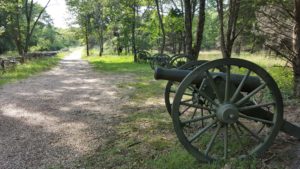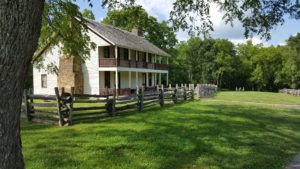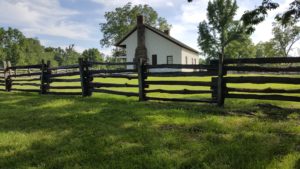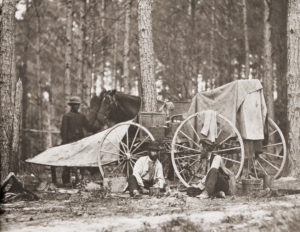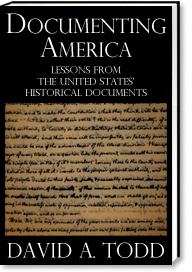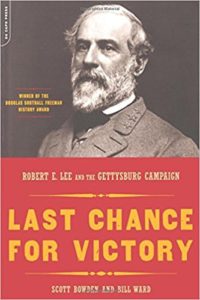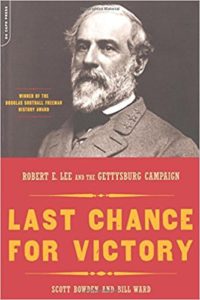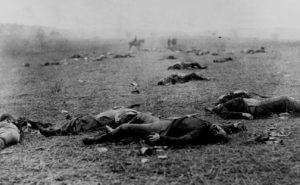After a four day weekend trip to Meade, Kansas, for the funeral of my wife’s aunt, we returned home Monday evening, around 6:15 p.m. That’s what I call getting in in good time. After unpacking and relaxing a little, I went to The Dungeon, with the intent of resuming my writing career.

However, I saw that I had two directions to go in, and that one was necessary and one was optional. On the weekend I had spent some time reading for research into my next church history novel. I could continue with that, as well as re-read what I’ve written in my workplace humor novel, and decide which I would do next. Those two, together, form one direction: a writing path.
The other direction was publishing tasks. I need to get the print version of Documenting America: Civil War Edition finished and published. I need to get the print version of Headshots finished and published. On Monday evening, as I sat trying to make the decision, the former needed only a little work, while the latter had the interior done (I think; it’s been a while since I did it), and the cover needs to be done. I also need to get recent books listed on Goodreads, and a couple of short stories added to Smashwords.
I could see right away that the publishing tasks were more important right now. Yet, I couldn’t do them. Just something about them made me want to not start them. The same was true Tuesday and Wednesday. I couldn’t make myself do them. The DA:CWE cover it on my computer at work, and the interior on my computer at home. I guess it’s also on OneDrive, but I don’t really know how to use that or access it from work. But at work, in my personal time, I couldn’t make myself work on the cover. At home, I couldn’t make myself finish the interior. Consequently, Monday-Tuesday-Wednesday I got nothing done on my writing/publishing.
Yesterday was different. Thursday morning, before work started, I pulled up the cover in G.I.M.P. Just using that program makes me want to vomit. But, I didn’t really have much to do. I had one block of text I needed to change the font on, move an image a little, and I was done. I couldn’t figure out how to make the text changes. I looked in the manual, in some on-line tutorials, all with no help. Finally, I looked closer at my cover, and could see that the text, which was placed in the cover by someone else for the last book in the series, wasn’t a text layer at all; it was an image that couldn’t be changed. I quickly deleted that layer, created a text layer and put the text in with the correct font. I had the cover done and saved at 8:05 a.m.
Then, last night I took a look at the interior. I had finished it a couple of weeks ago, but wanted to give it one more look-through, just to make sure. I did that, and judged it “done”. I e-mailed it to my office (because I don’t know how to use OneDrive) to make the PDF today. I’ll do that shortly. At that point, I’ll have the cover and the interior files done, and on the same computer, and so will do the upload. I hope to have the finished on the noon hour today.

That brings me to Headshots. I think this weekend I’ll see what I can do with that. If the interior is really done, all that will be left is the print cover. That will have to wait until next week, unless I wake up my old computer (which had G.I.M. P.) and try to do it there. They say it’s to rain much of the weekend. How I would love to get Headshots done.
Adding books to Goodreads is easy; there’s just a few steps to go through. Adding the short stores to Smashwords will take a little formatting, but that should be only 30 minutes for each. Who know? Maybe by Sunday I can have all my publishing tasks behind me, and Monday I’ll be ready to get back to writing tasks. I’ll give you a report then.


